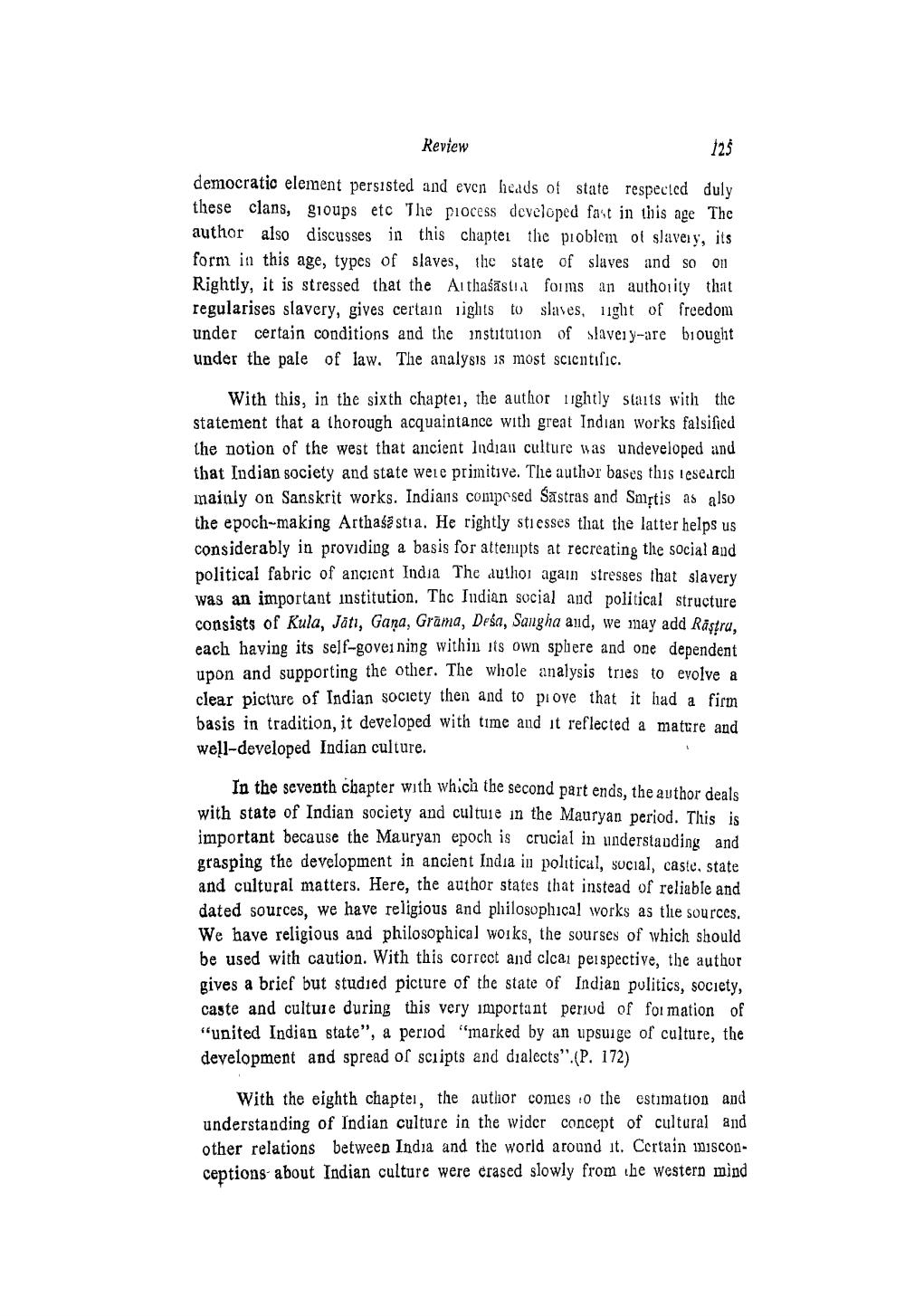________________
Review
125 democratic element persisted and even heads of state respected duly these clans, groups etc 'The process developed fast in this age The author also discusses in this chapter the problem of slavery, its form in this age, types of slaves, the state of slaves and so on Rightly, it is stressed that the Ai thaśāsta forms an authority that regularises slavery, gives certain rights to slaves, night of freedom under certain conditions and the institution of slavery-are brought under the pale of law. The analysis is most scientific.
With this, in the sixth chapter, the author lightly starts with the statement that a thorough acquaintance with great Indian works falsified the notion of the west that ancient Indian culture was undeveloped and that Indian society and state were primitive. The author bases this researchi mainly on Sanskrit works. Indians composed Sastras and Smộtis as also the epoch-making Arthasastia. He rightly stresses that the latter helps us considerably in providing a basis for attempts at recreating the social and political fabric of ancient India The author again stresses that slavery was an important institution. Thc Indian social and political structure consists of Kula, Jāti, Gana, Grāma, Desa, Sangha and, we may add Rästru, each having its self-governing within its own spliere and one dependent upon and supporting the other. The whole analysis tries to evolve a clear picture of Indian society then and to prove that it had a firm basis in tradition, it developed with time and it reflected a mature and well-developed Indian culture.
In the seventh chapter with which the second part ends, the author deals with state of Indian society and culture in the Mauryan period. This is important because the Mauryan epoch is crucial in understanding and grasping the development in ancient India iu political, social, caste, state and cultural matters. Here, the author states that instead of reliable and dated sources, we have religious and philosophical works as the sources. We have religious and philosophical works, the sourses of which should be used with caution. With this correct and clcai perspective, the author gives a brief but studied picture of the state of Indian politics, society, caste and culture during this very important period of foi mation of "united Indian state", a period "marked by an upsuige of culture, the development and spread of scripts and dialects”.(P. 172)
With the eighth chapter, the author comes to the estimation and understanding of Indian culture in the wider concept of cultural and other relations between India and the world around it. Certain 101sconceptions about Indian culture were erased slowly from the western mind




